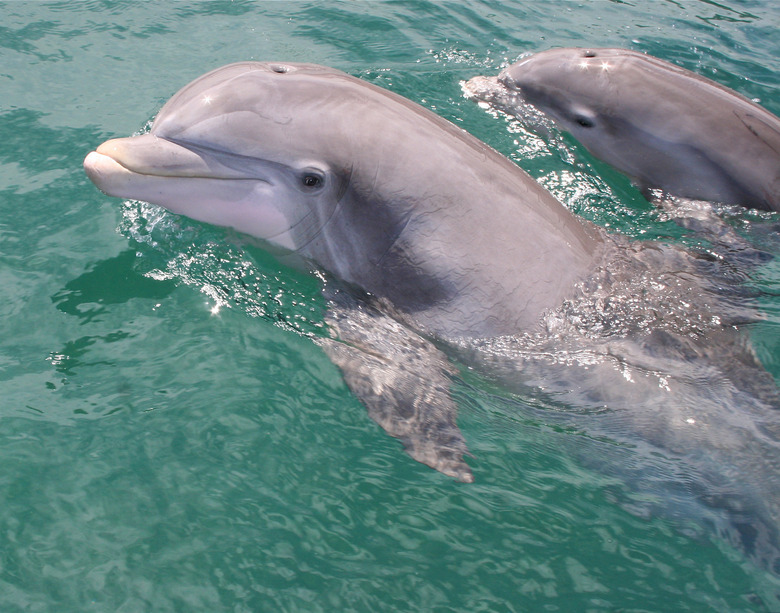How Do Dolphins Nurse?
Thanks to their intelligence, playful demeanor and uncanny ability to leap through the sea, dolphins are among the most popular ocean animals. However, there's a key difference between them and their fish friends. Dolphins are mammals, which mean that they nurse their young. The logistics are different from those of the mammals that nurse on land, but dolphin mothers have evolved in fascinating ways to provide their young with the nutrients they need to grow.
TL;DR (Too Long; Didn't Read)
To prevent waste and maintain a streamlined marine body, dolphins use inverted nipples and voluntary milk ejection to efficiently nurse their young.
Underwater Mammals
Underwater Mammals
Dolphins are one of several types of marine mammals. Some marine mammals, such as otters and polar bears, are better suited to life on land even though they spend some time swimming. Others, such as sea lions and seals, have adapted to life mostly underwater but still head back to land for certain jobs like mating and molting.
Dolphins and whales represent the type of marine mammals who spend their entire lives underwater, which makes them fascinating cases of evolution. Over thousands of years, they developed characteristics to equip them to a life at sea, such as streamlined bodies to cut back on drag and flippers to help them swim. Despite these adaptations, they still exhibit two of the main characteristics of mammals: They breathe air and nurse their young.
Dolphin Anatomy
Dolphin Anatomy
A mother dolphin's anatomy has to be different from the body of a mother that nurses on land. A mammal such as a cow or a pig has visible nipples protruding from its body that the baby can attach to whenever it feels like it. The baby doesn't have to worry about latching with a perfect seal because it's not that big a deal if a little milk dribbles out. Underwater, though, dolphin bodies must stay streamlined to prevent drag, and they can't risk lactating and losing all their milk to the surrounding water.
A female dolphin has two inverted nipples that sit within its mammary slits, near its belly. When a calf is ready to nurse, it places its beak into the slit to form a firm latch all the way around the inverted teat. With that stimulation, the mother voluntarily ejects milk. This allows her to control the flow of milk, so it goes straight to her calf and not anywhere else.
At some point, both mom and baby dolphin need to surface for air, so the feeding practice is quicker than it is for most land mammals. For that reason, dolphin milk is dense with nutrients and richer and fattier than the milk of most mammals on land.
Nursing Mothers
Nursing Mothers
For the first few weeks of a calf's life, a mother dolphin may ease its young into nursing by flipping to her side a bit. After a while, though, calves learn to nurse as the mother swims, although the mother often slows its pace while the calf feeds.
A mother may nurse her calf for up to three years, usually weaning her youngest when she is pregnant with another. Scientists believe that the nursing process is an important part of a young dolphin's life and a way to strengthen the bond between mother and child.
Cite This Article
MLA
Dragani, Rachelle. "How Do Dolphins Nurse?" sciencing.com, https://www.sciencing.com/dolphins-nurse-4565738/. 2 May 2018.
APA
Dragani, Rachelle. (2018, May 2). How Do Dolphins Nurse?. sciencing.com. Retrieved from https://www.sciencing.com/dolphins-nurse-4565738/
Chicago
Dragani, Rachelle. How Do Dolphins Nurse? last modified March 24, 2022. https://www.sciencing.com/dolphins-nurse-4565738/
